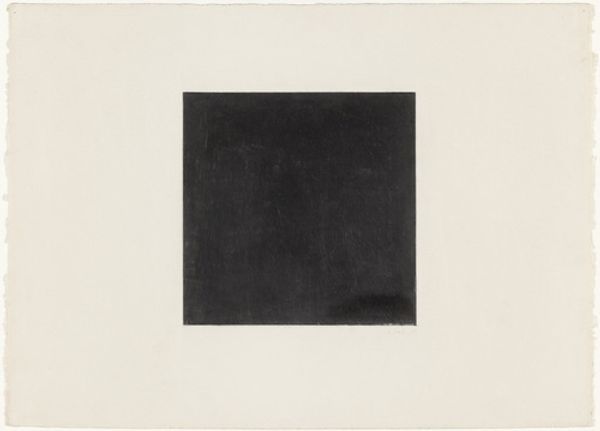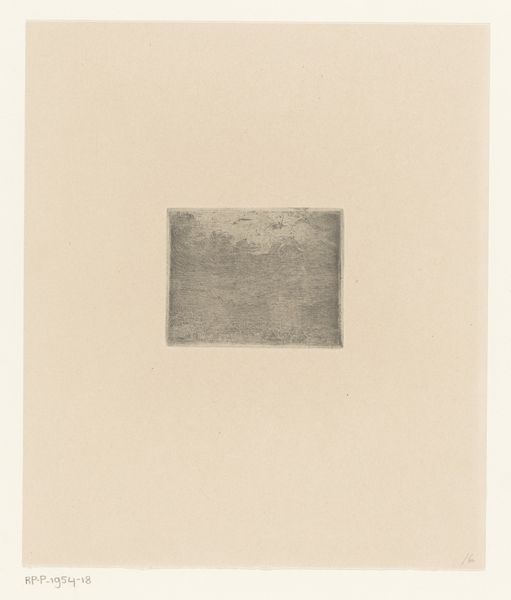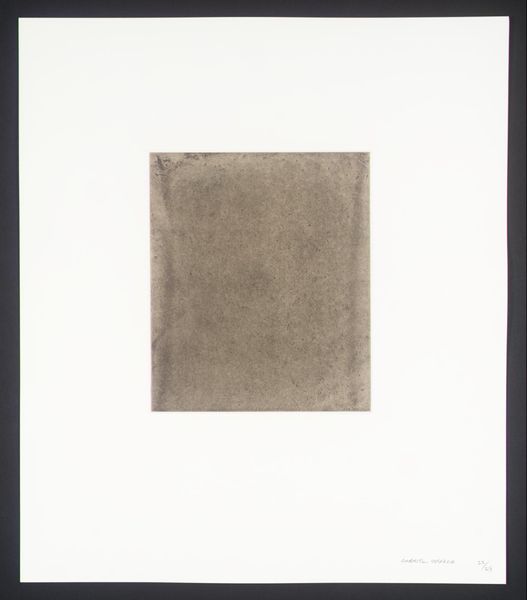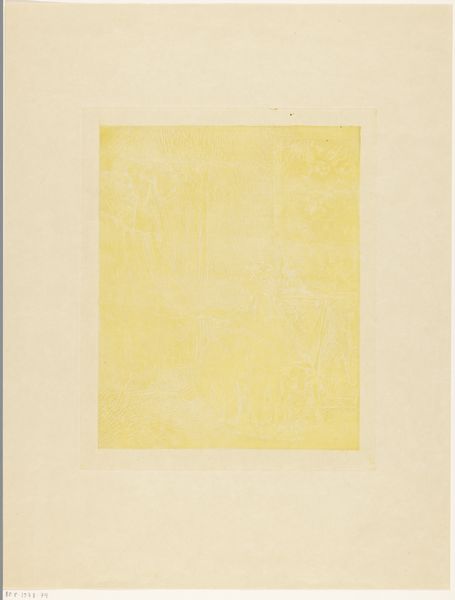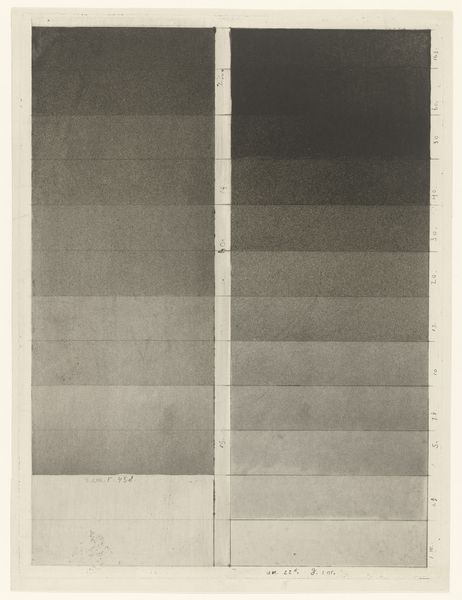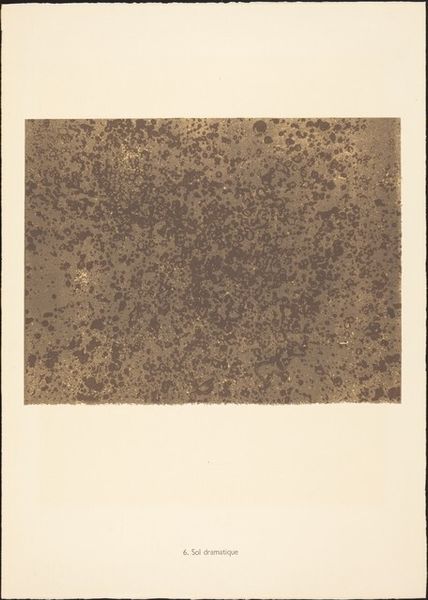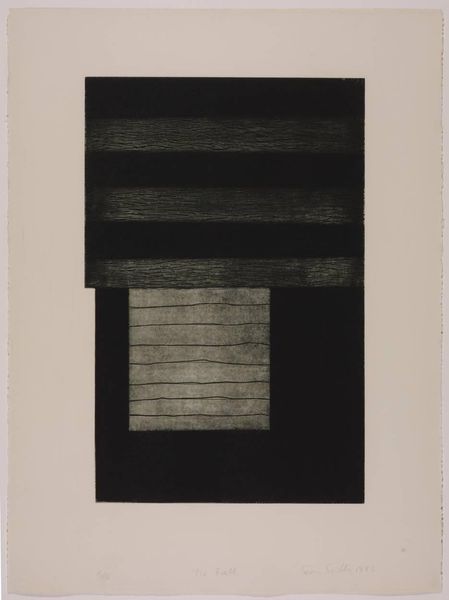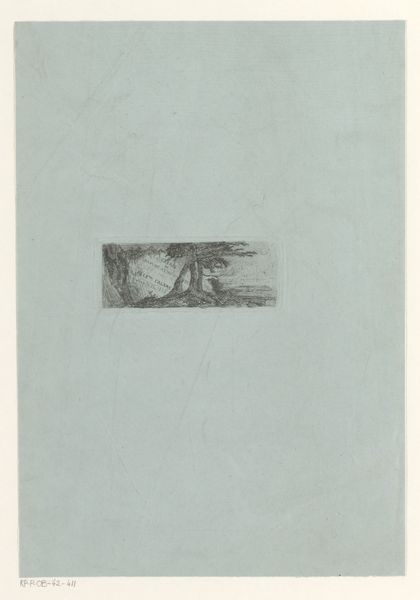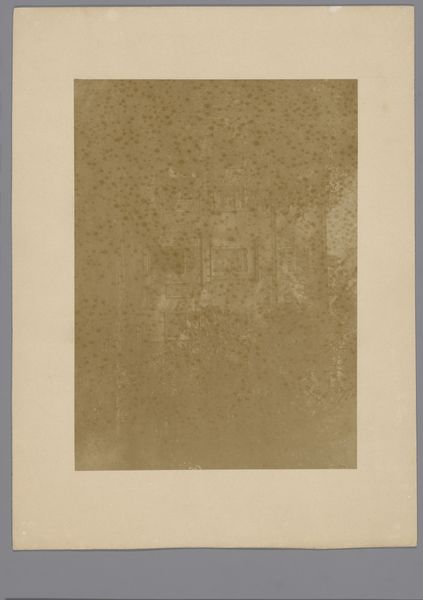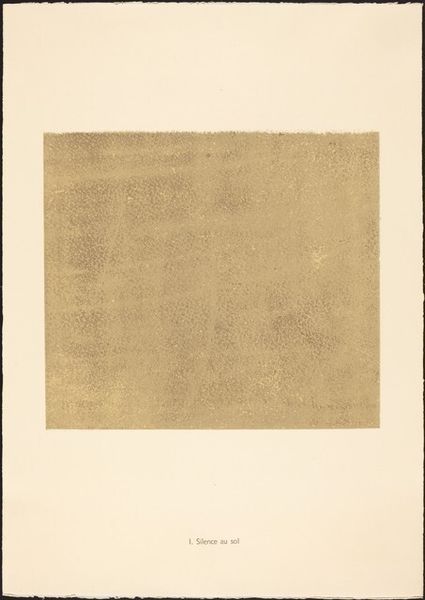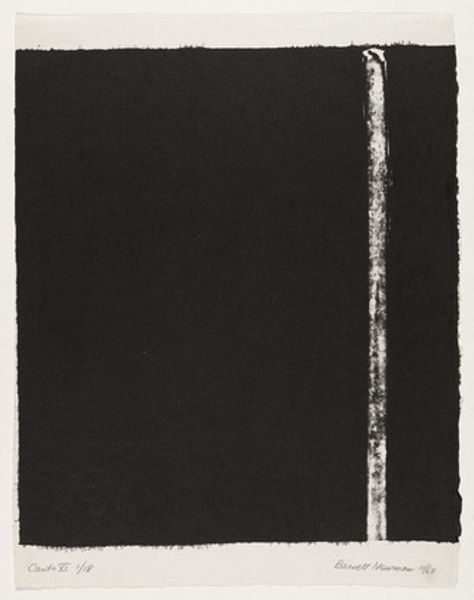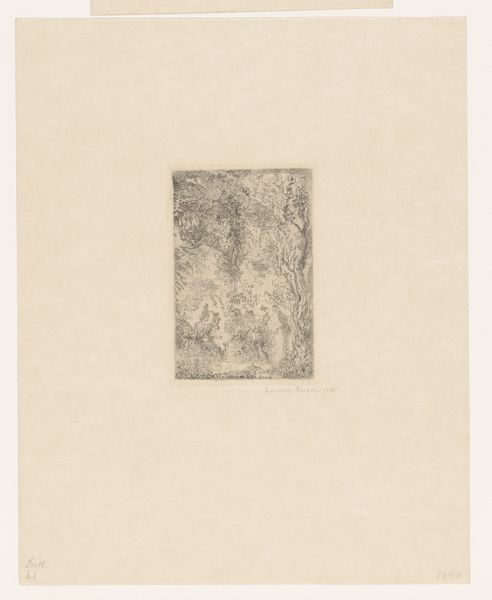
Copyright: Christopher Wilmarth,Fair Use
Editor: Christopher Wilmarth's "Nine Clearings for a Standing Man #8," a 1973 print on paper, is strikingly simple. I’m immediately drawn to its somber mood and geometric composition. How do you interpret this work through a formalist lens? Curator: Precisely! The reduction to geometric essentials foregrounds the work’s inherent qualities. Consider the interplay between the two distinct rectangular zones and the vertical lines interrupting the lower register. Note how the tonality shifts subtly from top to bottom. The composition’s flatness calls attention to the picture plane itself. How does that visual economy function in the context of abstraction? Editor: I see what you mean about the picture plane, and the simple tonal variations do have a grounding effect on such geometric forms. The two vertical lines are intriguing, aren't they? Are they crucial to the overall form? Curator: Absolutely. They disrupt what might otherwise be an exercise in pure geometric formalism, adding a layer of semiotic possibility, yet resist easy decipherment. Are they supports, boundaries, or something else entirely? Wilmarth withholds any clarifying context. What does the withholding contribute to your engagement with this artwork? Editor: It definitely prompts a closer look, encouraging you to look for meaning in what’s actually *there*, the line, tone, the space itself. It's certainly a lesson in visual literacy, stripping away everything but the fundamentals. Curator: Indeed. Wilmarth allows the viewer to experience the basic visual components. Understanding their intrinsic properties unlocks the work's aesthetic power.
Comments
No comments
Be the first to comment and join the conversation on the ultimate creative platform.
